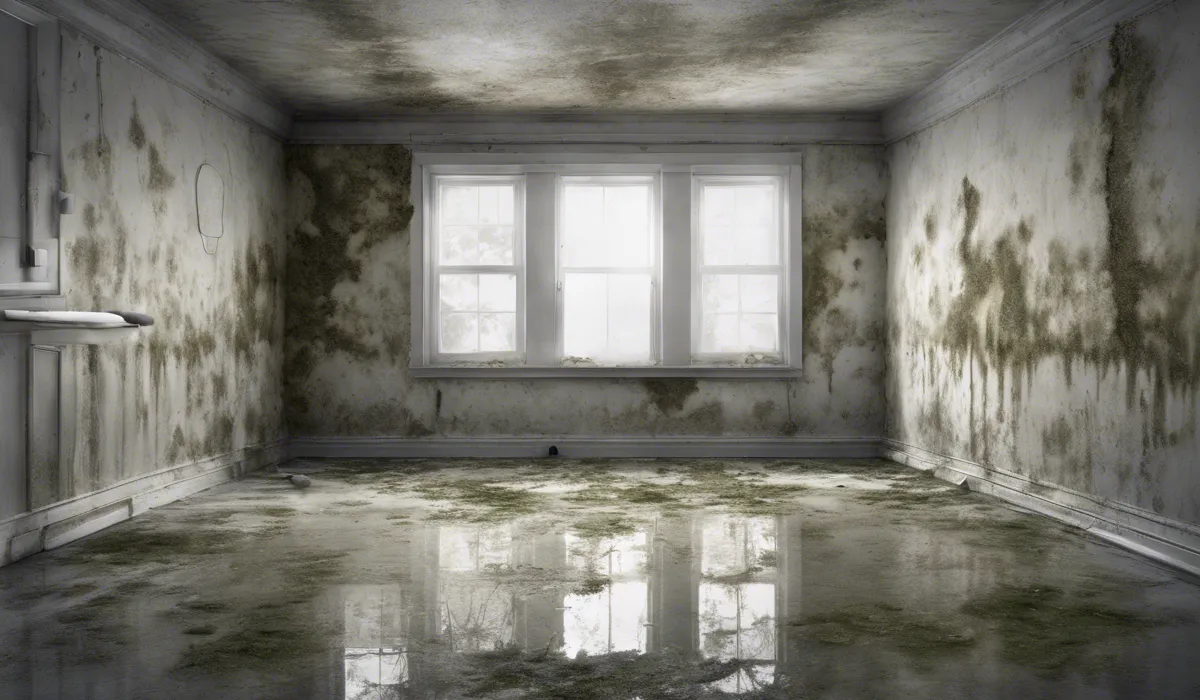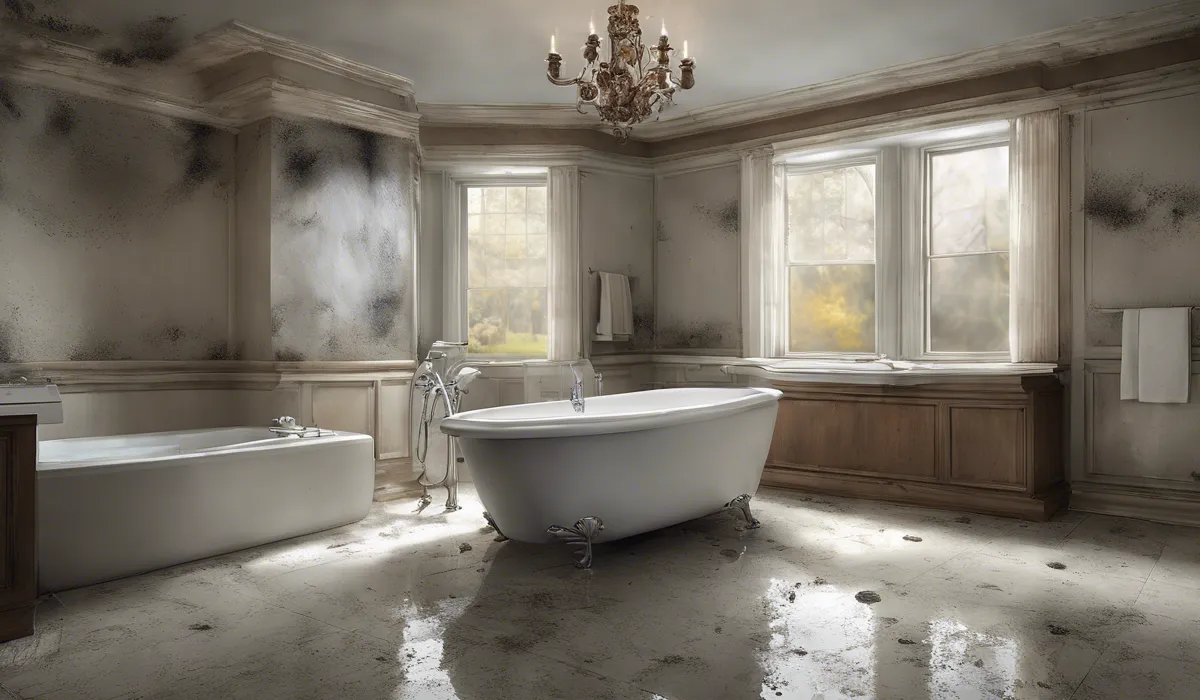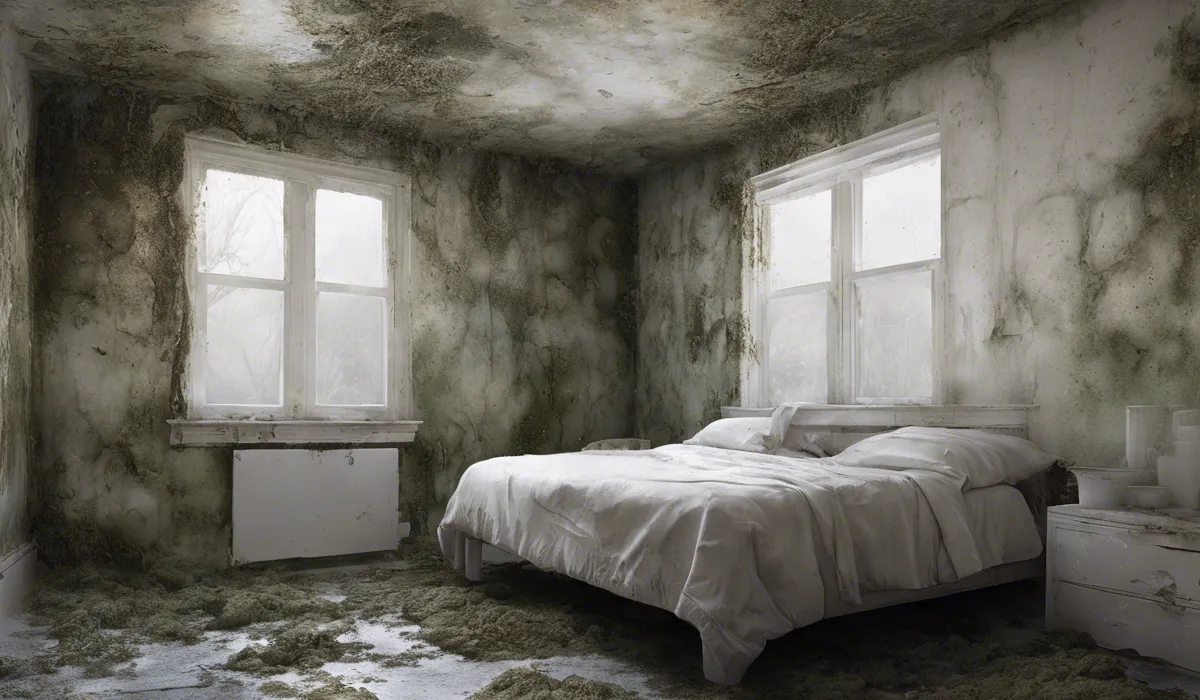Mold is dangerous because it produces allergens, irritants, and mycotoxins that can cause health issues like respiratory problems, allergic reactions, and in severe cases, toxic effects when ingested or inhaled.
Health Risks of Mold Exposure

Allergic Reactions and Asthma
Mold in our living spaces can lead to various allergic reactions. These reactions often include symptoms like sneezing, runny nose, red eyes, and skin rash.
Mold can be particularly harmful for individuals with asthma, potentially causing increased asthma attacks.
The reason behind this is that mold spores can be inhaled and trigger the body’s immune system.
This response can cause inflammation of the air passages, leading to difficulty in breathing and other asthma-related symptoms.
It is crucial for people with allergies and asthma to limit their exposure to mold to avoid these adverse reactions.
Respiratory Infections and Complications
Beyond allergic reactions, mold exposure can lead to more severe respiratory infections. These infections can be particularly dangerous for those with chronic lung diseases.
Mold spores that are breathed in can colonize the respiratory system, causing infections like bronchitis or even pneumonia.
Symptoms may include coughing, wheezing, and shortness of breath. If left unchecked, such infections can lead to complications that might require medical intervention, including hospitalization.
Mycotoxins and Their Effects on Health
Mold does not just physically irritate; it can also produce toxic substances known as mycotoxins.
These toxins can have a severe impact on human health when exposure occurs over time.
Mycotoxins can cause symptoms ranging from nausea and fatigue to more serious neurological problems and even suppression of the immune system.
It is especially dangerous when mycotoxins make their way into the food we eat, as they can lead to long-term health issues.
Vulnerable Groups
Certain groups of people are more susceptible to the dangers of mold. Young children, the elderly, and those with weakened immune systems are at a higher risk of experiencing severe effects from mold exposure.
Children’s developing bodies can be profoundly affected by mold, potentially causing lifelong respiratory issues.
For the elderly and immunocompromised individuals, their bodies may not be able to fight off mold infections effectively, leading to more significant health risks.
Mold in the Home and Workplace

Common Locations for Mold Growth
Mold loves damp, warm, and humid environments. Common places for mold to grow include bathrooms, basements, around windows, and under sinks. It can also grow on paper, wood, and fabrics.
Keeping these areas dry and well-ventilated is key to preventing mold growth. Regular inspections can help identify potential mold problems early on.
Signs and Symptoms of Mold Infestation
Knowing the signs of mold infestation can help you tackle the problem before it worsens. Watch out for a musty odor, visible mold growth, and water stains on walls or ceilings.
Health symptoms such as persistent coughing, sneezing, or headaches when inside the building can also indicate a mold issue. If you notice these signs, it may be time to assess your space for mold.
The Economic Cost of Mold Damage and Removal
The presence of mold can lead to hefty financial burdens. Property damage from mold can decrease the value of your home or building.
The cost of removing mold and restoring the area can also be significant. In some cases, personal belongings damaged by mold may need to be discarded and replaced.
These costs reinforce the importance of early detection and prevention.
Prevention and Remediation of Mold

Strategies for Preventing Mold Growth
Preventing mold starts with controlling moisture levels. Use dehumidifiers and air conditioners to keep humidity below 50%.
Fix leaks promptly, and ensure good ventilation in bathrooms, kitchens, and laundry areas. Regular cleaning and using mold-resistant products can also help prevent mold from taking hold in your home or workplace.
Professional Mold Remediation Processes
If mold has already become a problem, professional mold remediation may be necessary. Professionals have the expertise and equipment to safely and effectively remove mold.
They will assess the area, contain the mold to prevent it from spreading, and use specialized air filters and cleaners to remove the mold.
They will also address the moisture source that allowed the mold to grow in the first place.
DIY Mold Removal: Safety and Effectiveness
For small areas affected by mold, you might consider DIY removal. It’s essential to wear protective gear, such as gloves and masks, to avoid exposure to mold and its spores.
You can clean hard surfaces with water and detergent, but porous materials with mold growth often need to be thrown away.
Remember, tackling mold on your own can be risky, and it’s always safer to consult a professional if you’re unsure.
Long-Term Solutions for Mold Control and Maintenance
Long-term solutions for mold control include regular maintenance and monitoring of areas prone to moisture build-up.
Use paint with mold-inhibitors, opt for mold-resistant drywall, and ensure that your home has good drainage and ventilation systems. Education on mold prevention and control is also vital.
By understanding the risks and taking proactive steps, you can maintain a healthy, mold-free environment.
FAQs About the Dangers of Mold
Why is mold considered a health hazard?
Mold is considered a health hazard because it produces substances like allergens and mycotoxins that can cause respiratory issues, allergic reactions, and other health problems when people are exposed to them.
Can mold exposure cause respiratory problems?
Yes, mold exposure can lead to respiratory problems by irritating the airways, causing coughing, wheezing, and in those with asthma, triggering asthma attacks.
What are the allergic reactions caused by mold?
Common allergic reactions to mold include sneezing, runny or stuffy nose, itchy eyes, skin rash, and in severe cases, anaphylaxis.
Are some molds more dangerous than others?
Yes, some molds produce more potent mycotoxins or higher quantities of allergens, making them more hazardous to health, particularly black mold (Stachybotrys chartarum), known for its toxicity.
How can mold exposure be toxic?
Mold exposure can be toxic primarily due to mycotoxins, which are toxic substances produced by certain types of mold, and can lead to serious health issues if ingested, inhaled, or come into contact with skin.
Final Thoughts
Mold poses a significant health risk due to its production of allergens, irritants, and mycotoxins.
These substances can lead to respiratory difficulties, allergic reactions, and potentially toxic effects, especially when mold is ingested or its spores are inhaled, underscoring the importance of addressing mold infestations promptly and effectively.
